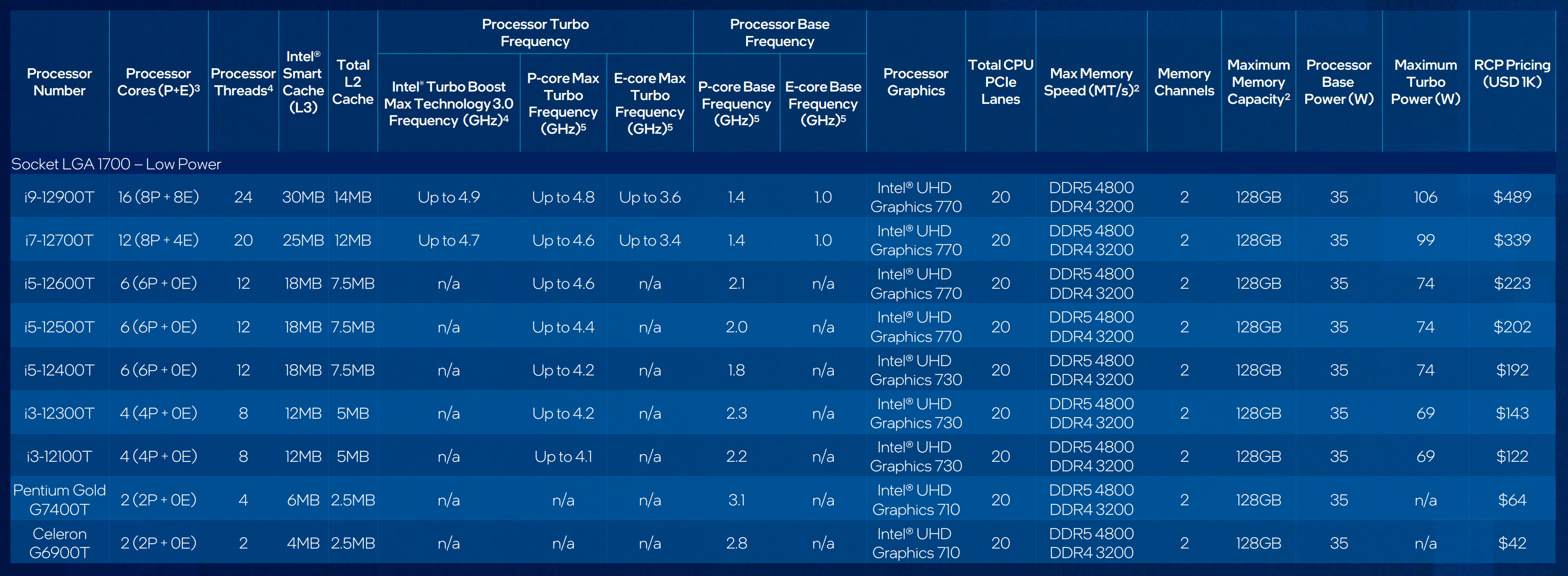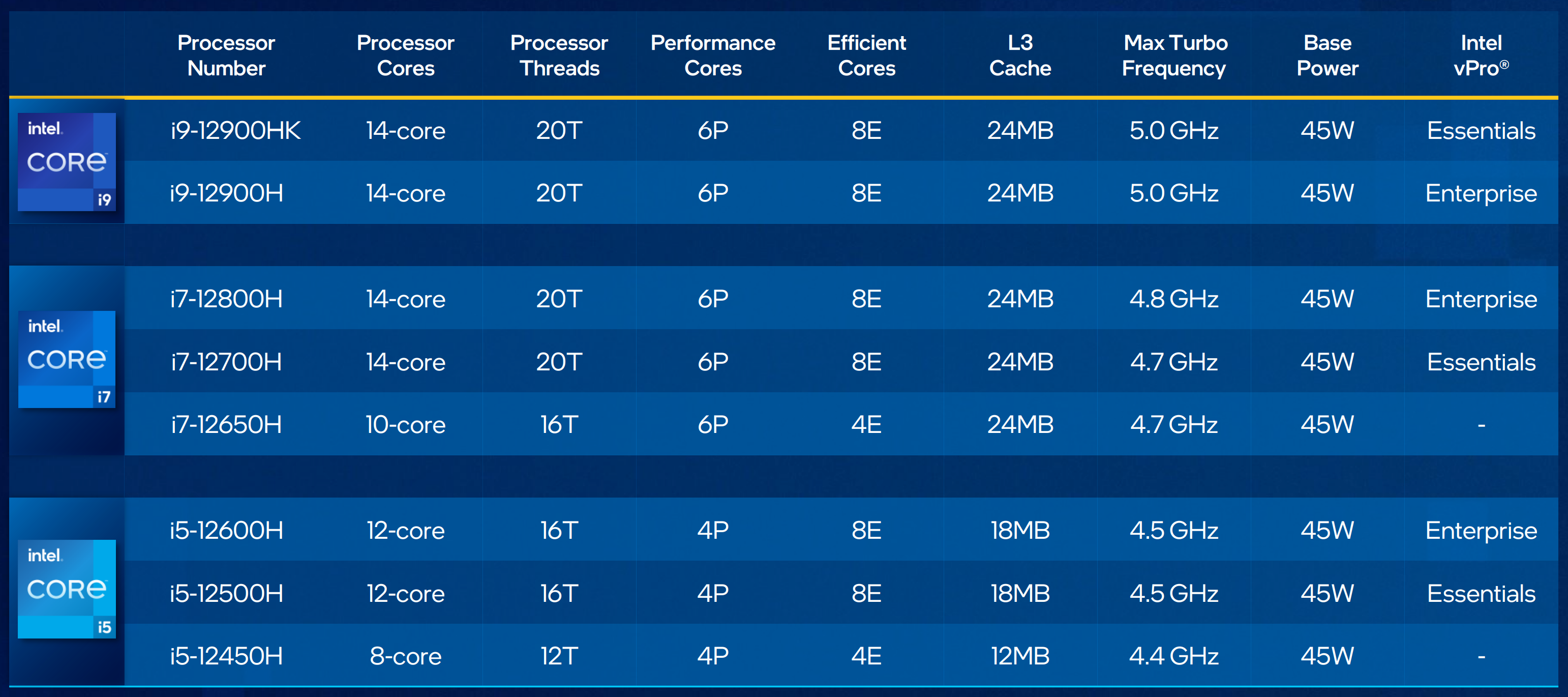That said, many of the latest, more affordable desktop chips – which are out now, by the by - use a modified architecture that lacks the dinkier E-cores. They still employ the very gaming-friendly P-core design, so while they’re unlikely to reach the same performance highs in games that are heavily multithreaded, they still could be good alternatives to the new Ryzen 6000 APUs that AMD announced earlier. Especially if you’re speccing out a PC for games alone, and don’t need the multitasking prowess that the extra E-cores can provide. There’s a honking great 22 desktop chips joining the range (the initial Alder Lake launch had six), for which the full specs are listed below. As you can tell from the lack of Ks in the names, none of these are unlocked for overclocking, though some variants offer the choice of F- and T-series models. F-series CPUs are identical to their suffix-deprived versions, save for a lack of integrated graphics and a slightly lower price, while T-series chips trade away a little bit of clock speed for better overall efficiency. Notably, all of these – even the 16-core Intel Core i9-12900 – have drastically lower base power usage ratings than their closest equivalents from the first, more enthusiast-focused round of Alder Lake CPUs. Potential highlights include the i5-12600, a locked, less PSU-hungry version of the outstanding Core i5-12600K, and the i5-12400F, which hopefully continues the tradition of Intel’s ‘400F’ chips being good-all-round gaming CPUs for those with limited upgrade funds. Speaking of which, the 12th generation finally has some Core i3 representation, albeit entirely without E-cores. Still, the entire lineup features other Alder Lake additions, including bonus PCIe lanes for more extensive expansion support, and compatibility with both DDR4 and DDR5 RAM. Though, uh, don’t feel obliged to switch to DDR5 if you’re upgrading. As for the new H-series mobile CPUs, these introduce Intel’s P-core/E-core architecture to gaming laptops while making other key improvements on the previous 11th Gen Tiger Lake’s feature set. Intel Thread Director, for example, feeds Windows extra data so that the OS’s task scheduler can more effectively assign workloads to the different threads. LPDDR5 support is also included, something that failed to materialise for Tiger Lake. At the top of the stack is the Core i9-12900HK, which with its six P-cores and eight E-cores should take the place of the old Core i9-11980HK in top-tier gaming laptops like the MSI GE76 Raider. There’s also a non-overclockable version of the same chip, alongside six more split evenly between Core i7 and Core i5 models. All eight have a base power rating of 45W, though I’m curious to see how such core-heavy designs fare with battery life. It’s not like they’re skimping on speeds either, though in fairness, it’s long been standard procedure for gaming laptops to conk out after a couple of hours away from the mains anyway. The more intriguing mystery is how well all these chips perform. Intel says with a discrete RTX 3030 GPU, the Core i9-12900HK can outpace the Core i9-11980HK by up to 20% in League of Legends, with smaller yet still meaningful improvements across the likes of Hitman 3, Far Cry 6 and Crysis Remastered. Intel’s official benchmarks should usually be taken with a few shipping containers of salt, mind, so I’ll be looking to test these myself ASAP.


